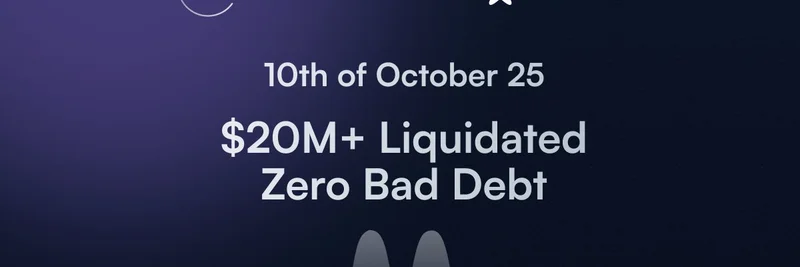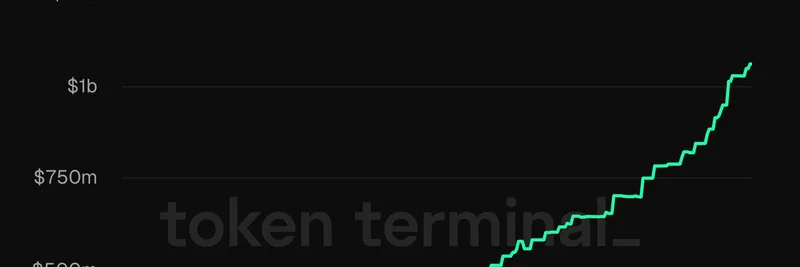In the wild world of DeFi, where market swings can wipe out fortunes in minutes, Kamino Finance just proved its mettle. On October 10, 2025, following surprise US-China tariff news, the crypto market took a nosedive—SOL dropped 19.5%, altcoins plummeted up to 70%, and Kamino's assets shed about 30% peak-to-trough. This event triggered the largest liquidation cascade in crypto history, bigger than the COVID crash, FTX collapse, or Luna implosion in terms of 24-hour liquidations.
Kamino, a lending protocol on Solana, handled over $20 million in liquidations across more than 8,000 events without a single dime of bad debt. That's huge—bad debt in DeFi means the protocol eats losses when liquidations don't cover underwater loans. Kamino's system ensured everything stayed solvent, thanks to smart design features like partial liquidations (where only a portion of a position is sold off) and dynamic bonuses that incentivize liquidators to act fast.
The Market Meltdown Breakdown
Let's set the scene: SOL, Solana's native token, crashed from $220 to $177. Altcoins got hammered even harder, with some losing 70% of their value. For context, this was a rapid, news-driven sell-off that caught many traders off guard. Kamino's assets mirrored this chaos, dropping around 30% from high to low.
In this storm, Kamino saw $20M liquidated. But here's the kicker—the median user only lost 0.07% of their position size. That's like barely a scratch compared to what could have happened. Over 114 liquidators jumped in, competing to process these events, which kept fees low and efficiency high.
Compared to a similar event in April, this one liquidated 16% more assets but with 14% less in fees extracted from users. Plus, 31% more liquidators participated, showing the ecosystem is growing and getting more competitive. This competition benefits everyone: users pay less, and the protocol stays protected.
Users Caught in the Crossfire
Despite the massive $521M in protocol volume, there was surprisingly little user activity during the crash itself. About 1,700 wallets were affected, but many didn't bother intervening. Why? It could signal growing trust in Kamino's automated risk management—no need to panic-refresh your dashboard when the system handles it for you.
Liquidation Details: Where the Action Happened
Diving into the specifics, the bulk of liquidations hit the main markets at $16M, followed by Fartcoin (a cheeky meme token that's gained traction on Solana) at $1.7M, JLP at $1.3M, and various altcoin markets totaling $666k. Most of these were SOL longs—bets that SOL would rise, which backfired spectacularly.
The top five wallets accounted for 30% of the seized collateral, and only 23 wallets faced liquidations over $200k. Kamino's risk design prevented this from snowballing into wider contagion, keeping the damage contained.
Liquidators Step Up Their Game
Kamino's liquidator ecosystem is evolving. In this event, 114 liquidators processed the cascade, with four handling over $1M each and 28 managing $100k+. They earned about $260k in fees—again, just 0.07% of position sizes on average.
Versus April's event, fees were 14% lower despite 16% more collateral processed. This points to increased efficiency, better coverage, and overall resilience in the system.
Borrow Rates Spike, But Normalize Fast
During the peak chaos, borrow rates jumped: USDC hit 45%, CASH reached 35%, and SOL along with others hovered around 10%. These spikes encourage quick repayments or liquidations to balance supply and demand. But they normalized rapidly, showing Kamino's lend/borrow infrastructure held up better than some perpetual futures platforms or centralized exchanges under similar pressure.
Why This Matters for Meme Tokens and DeFi
For meme token enthusiasts, this event highlights the risks and rewards in volatile markets like Solana. Fartcoin's $1.7M liquidation shows how even fun, community-driven tokens can get caught in broader crashes. But Kamino's performance is a win for DeFi overall—it absorbed the most violent stress test in history without systemic fallout. DeFi is maturing, handling crises better than some traditional crypto venues.
If you're diving into meme tokens or lending on Solana, events like this underscore the importance of protocols with robust risk management. Kamino's partial liquidation model and competitive liquidator bonuses minimized user pain while keeping everything solvent.
For the full scoop, check out the detailed report on Kamino's governance site. You can also explore the liquidations dashboard and Hex.tech app for more data.
This crash reminds us: in crypto, volatility is the name of the game, but smart protocols like Kamino are making it safer to play.


